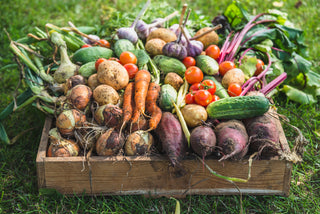Crop stress in vegetable seedlings refers to any environmental factor that reduces the growth and productivity of the plants. Some common sources of stress include:
Drought: Vegetable seedlings that do not receive enough water can experience drought stress, which can slow or stop their growth and increase their susceptibility to disease.
Overwatering: Excessive watering can lead to waterlogged soil, which can reduce oxygen levels in the soil and lead to root damage.
Nutrient deficiencies: Vegetable seedlings that do not receive adequate nutrients, such as nitrogen, phosphorus, and potassium, can experience nutrient stress, which can slow or stop their growth.
High temperatures: Vegetable seedlings that are exposed to high temperatures can experience heat stress, which can slow or stop their growth and increase their susceptibility to disease.
Cold temperatures: Vegetable seedlings that are exposed to cold temperatures can experience cold stress, which can slow or stop their growth and increase their susceptibility to disease.
Light intensity: Vegetable seedlings that are not exposed to adequate light intensity can experience light stress, which can slow or stop their growth.
Crop stress can reduce the productivity of vegetable seedlings, making it important to provide the right growing conditions to ensure healthy and robust growth. This includes providing adequate water, nutrients, light, and temperature, as well as avoiding overcrowding and providing proper air circulation.




